The beautiful temples in Madhya Pradesh, the heart of India, boast a treasure trove of exquisite spiritual sanctuaries. Discover the spiritual and architectural wonders of these 10 most beautiful temples to visit.
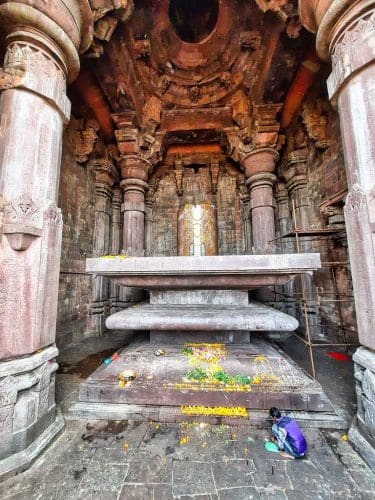
The spiritual heart of India in Madhya Pradesh is home to some of the most stunning temples you’ll ever see, making it a special spot for both Shiva and Shakti worshippers. Each temple has its own story, offering a unique blend of spiritual vibes and architectural beauty. Get ready to be amazed by the incredible temples of Madhya Pradesh, where every visit is more than just sightseeing—it’s a journey into India’s rich spiritual tradition. Whether you’re looking for peace, history, or just some beautiful sights, these temples are a must-visit.
If you’re religiously oriented and looking for a trip to unite with God and refresh your soul with happiness, Madhya Pradesh is a must-see destination. The region is graced by both Shiva and Shakti because it is endowed with Shakti Peethas (sacred locations of cosmic force) and jyotirlingas (religious artefacts signifying the Almighty Lord Shiva).
There are several famous temples in Madhya Pradesh, and they are said to represent the locations where the divine beings connect with worshippers. The majority of Madhya Pradesh’s temples have majestic grandeur and interesting facts to share. Some of them are mentioned below.
Mahakaleshwar Jyotirlinga
For Hindus, the sacred region of Ujjain bears significant spiritual importance since it is home to one of the Jyotirlingas, Mahakaleshwar. The temple is among the 18 Maha Shakti peetham and is situated on the shore of Rudrasagar Lake. As per the Shiv Purana, Lord Shiva arrived in his Mahakala form at Ujjain many years ago to defeat a devil named Dushana, who always used to torment the residents of Ujjain.
After defeating Dushana, Lord Shiva assumed the shape of a jyotirlinga and moved into this sacred city. The temple is most beautiful during the Sawan and Nag Panchami festivals because the temple building is decorated with lighting, garlands, and decorations. Mahakaleshwar seems to be the only jyotirlinga with a lingam facing south and a Shree yantra engraved on the roof just above Garbhagriha.
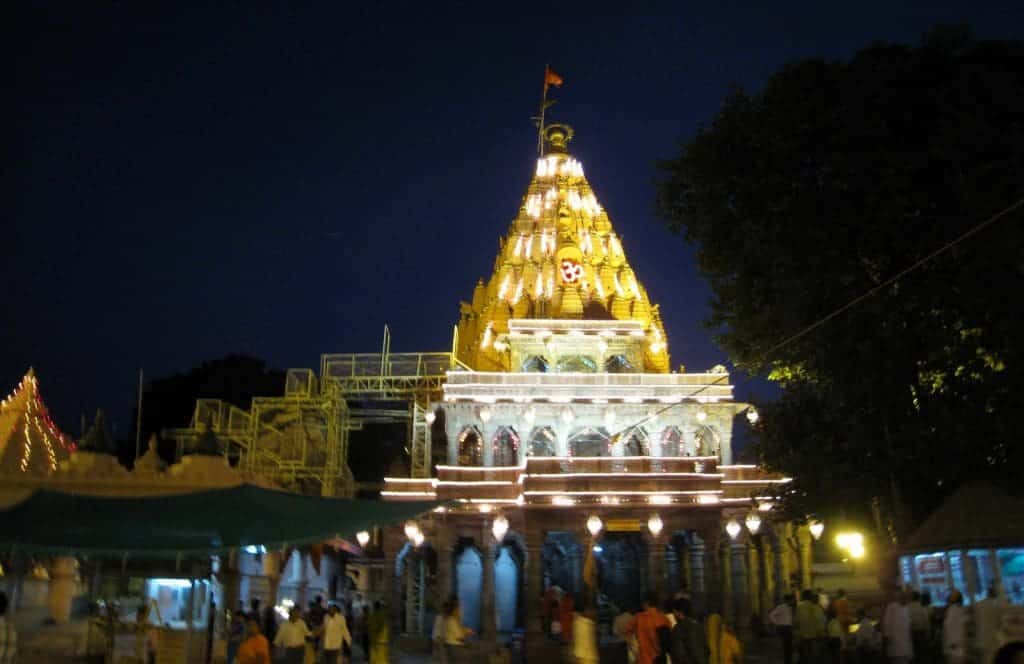
Throughout the Maha Shivaratri occasion, a massive fair is organized. Also, the festivities and prayers last all night. The primary attraction of the temple is the ‘Bhasm-Aarti,’ which is conducted every day and involves the Shivlinga being showered in ash from a clean cremation flame.
Bada Ganesh Ka Mandir
Bada Ganesh Ka Mandir, devoted to Lord Ganesha, is a renowned religious travel destination in Ujjain and is regarded as one of the greatest temples in Madhya Pradesh. Every year, thousands of visitors from all around the country flock to this shrine. The unique element of this temple is that, in addition to being a tourist attraction, Ganesh Ka Mandir simultaneously acts as a study centre for astrology and Sanskrit.
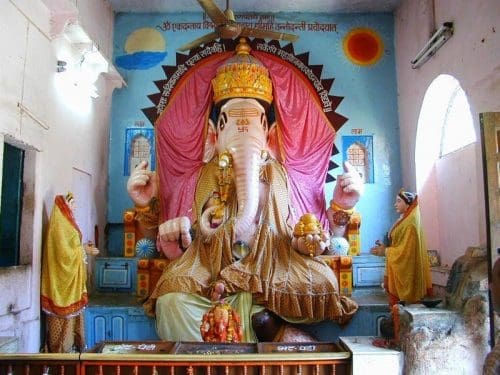
This is yet another factor why it attracts so many individuals. A visit to this Madhya Pradesh Temple is a necessity for individuals who are not only religiously oriented but also wish to understand the indigenous text of Sanskrit and desire to practice astrology.
Sas-Bahu Temple
The Sas-Bahu Temple was erected in the 11th century by King Mahipala of the Kachwaha dynasty and is nestled on the eastern side of Gwalior Fort. The paradox is that contrary to what the name implies, it is not a temple dedicated to Sas (Mother law) and Bahu (Daughter in law), but rather a name derived from Sahastrabahu, another title for Lord Vishnu.
On its door are sculptures of Lord Brahma, Lord Vishnu, and Goddess Saraswathi. There seem to be two shrine constructions, one tiny and one large. The temple features a pyramidal shape with no arches is composed of red sandstone, and has lovely lotus carvings.
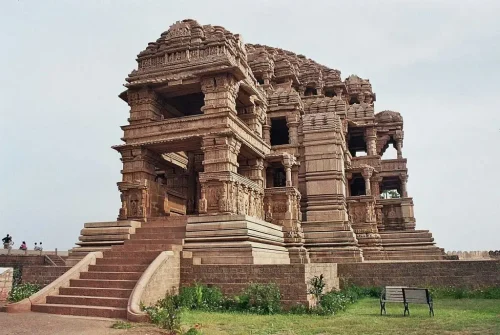
It is known for its magnificent carvings, which depict the dazzling artistic talents of the craftsmen and artists of the time. The temple is best recognized for providing the most spectacular scenery of Gwalior, and a climb from Gwalior Fort to the shrine is also a popular pastime if the sky is clear.
Annapurna Temple
The Annapurna Temple, devoted to Deity Annapurna, the deity of Food, is one of the attractions for tourists in Indore. This is one of Indore’s best-preserved, thought to have been built in the 9th century. The temple is notable for its elaborate engravings and design, which recalls one of Madurai’s Meenakshi Amman Temple.
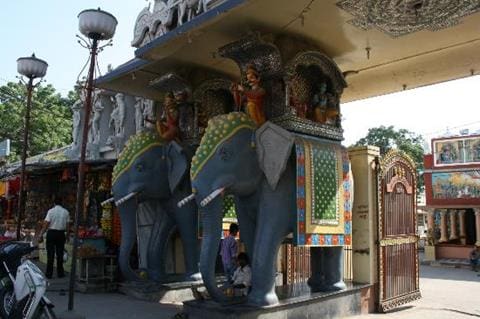
This temple contains statues of Lord Shiva, Hanuman, and Kal Bhairav, in addition to the deity. True believers travel long distances to offer their respects to the idols here. Additionally, there is a sculpture of Lord Kashi Viswanath that is 14.5 feet tall. The temple‘s surroundings, like its chambers, are extremely spectacular. Visitors visit to see the grandeur of this ancient temple as well as the figure that sits there.
Yogini Temple
Another location to see in Jabalpur is the Yogini temple, which contributes to the historical and architectural idealism. The temple, which is near the famed Marble Rocks holds statues of Goddess Durga’s 64 followers. The temple‘s defining feature is the statue of Lord Shiva in the middle, accompanied by female goddess idols.
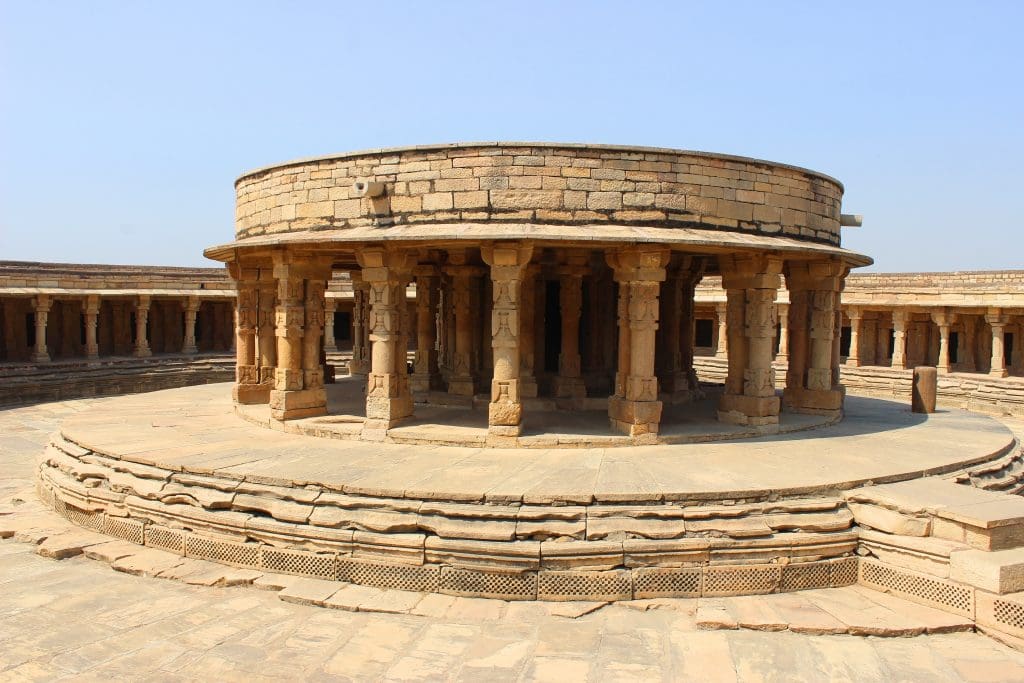
There seems to be a temple where Lord Shiva and his bride can be seen traveling on his companion, Nandi. All 64 shrines at Yogini temples appear identical, but what distinguishes them are the various gestures of yoginis. Because the temple is built in a central courtyard on a hilltop, visitors may enjoy the magnificent scenery of the Narmada and the natural environment.
Laxmi Narayan Temple
Lakshmi Narayana Temple, located atop Arera Hills, is a must-see on any vacation to Madhya Pradesh. This magnificent temple, dedicated to Goddess Lakshmi (the symbol of prosperity) and Lord Vishnu (the sustainer of the Human world), was erected by the powerful entrepreneur Birla family.
The temple’s sanctuary is adorned with statues of Goddess Lakshmi, Lord Narayana, and Lord Shiva with his bride, Parvati. The religious songs and chanting, along with the scenic backdrop, create a relaxing atmosphere for everyone who comes here. The Lakshmi Narayana Temple also contains a museum with antiquities from the 12th century.
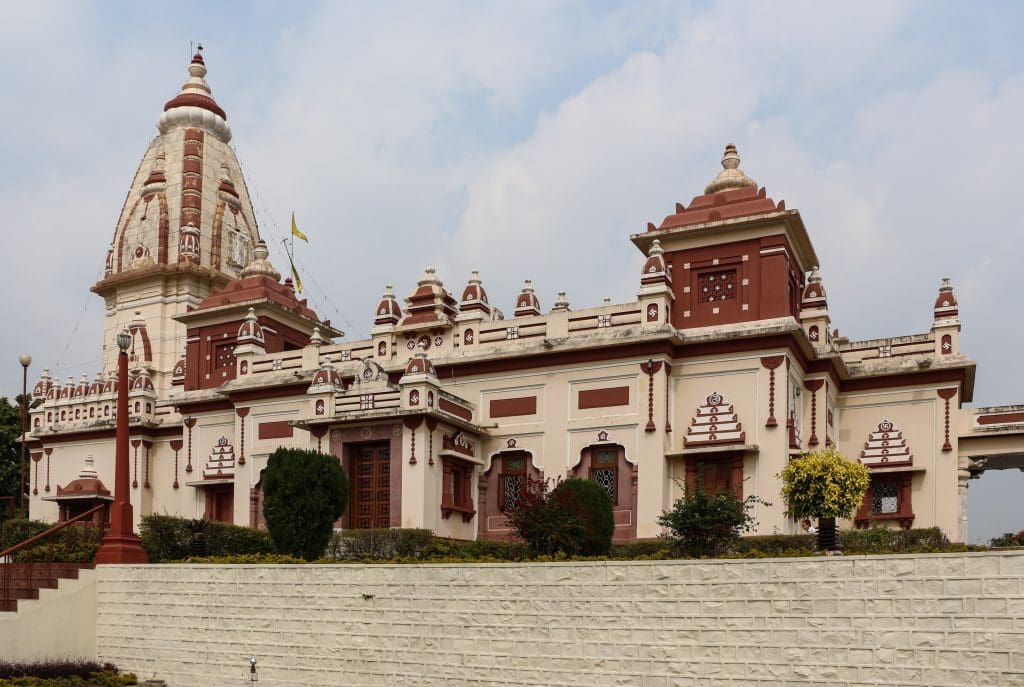
The temple’s splendour astounds the numerous worshippers who visit from all across the nation. The vivid artwork and sculptures on the inner walls are mandatory for visitors to witness.
Gupta Temple
Sanchi’s Gupta Temple is well-known around the globe for its minimalism, and archaeologists regard it as among the most rationally planned monuments in Indian architecture. The temple adorns the Sanchihill’s middle stratum. The temple was built in the fifth century A.D. and is regarded as the prestigious adjective of the Golden Age.
The temple represents the renewal of structural action in this location. It represented every tenet regarded to be useful in the construction of an Indian temple and comprises a stunning plain covered room as well as an encased entryway sustained by pillars. The temple represents the beginning of architectural styles in Indian history.
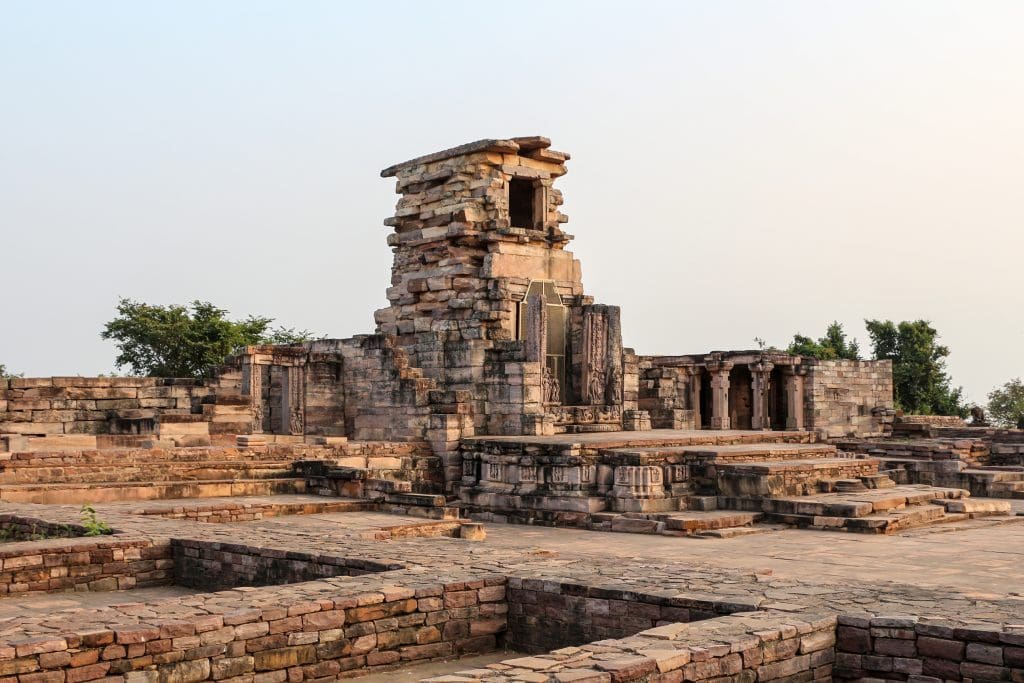
Chaturbhuj Temple
The Chaturbhuj temple, a unique combination of temple and fort designs, is devoted to Lord Vishnu and includes a large chamber for towering spires and massed chanting. As per folklore, the temple was initially erected to house Lord Ram’s idol, but it refused to back down from being a temporary dwelling.
Therefore an idol of Lord Vishnu with four arms was placed in the temple, hence the name Chaturbhuj temple. The Lord Ram idol is presently housed at the Ram Raja shrine. Travellers must up a high set of steps to enter the temple, where they can view the magnificence designed by the monarch to host the divinity.
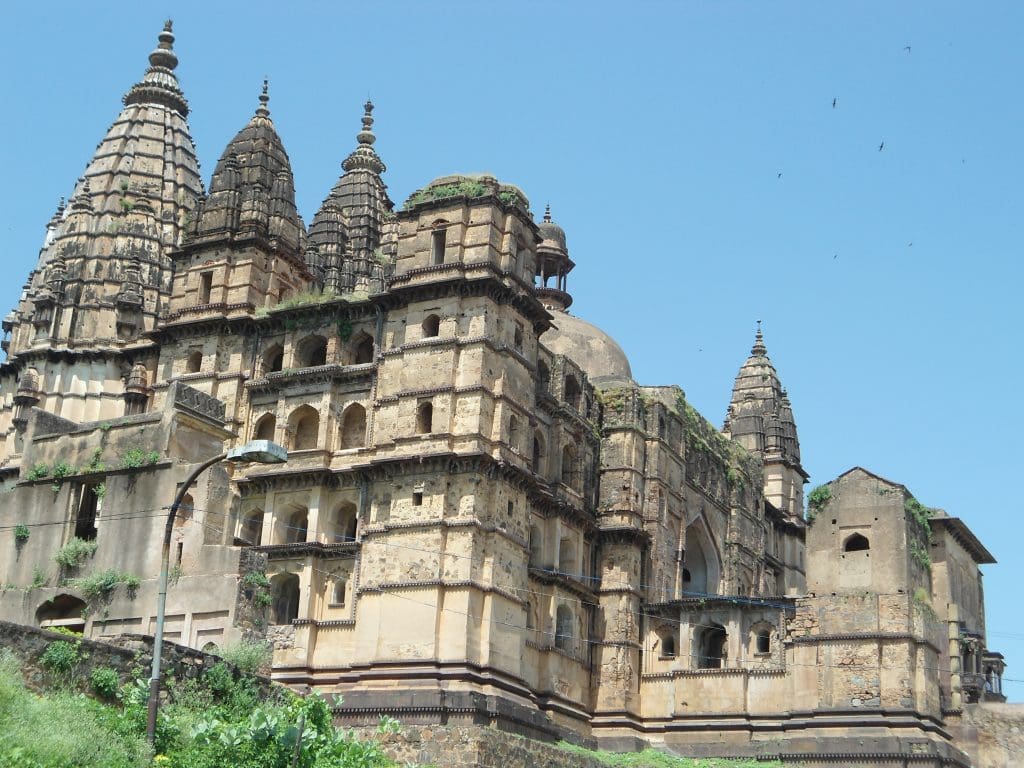
Find the secret steps that climb to the rooftop for a breathtaking picture of the entire surroundings.
Harsiddhi temple
Harsiddhi Temple, a prominent shrine in Ujjain and a significant Shaktipeeth was established during the rule of the Marathas. The major goddess of the temple is Harsiddhi Mata, whose idol is coloured dark crimson and sits between, both the statues of Mahasaraswati and Mahalaxmi.
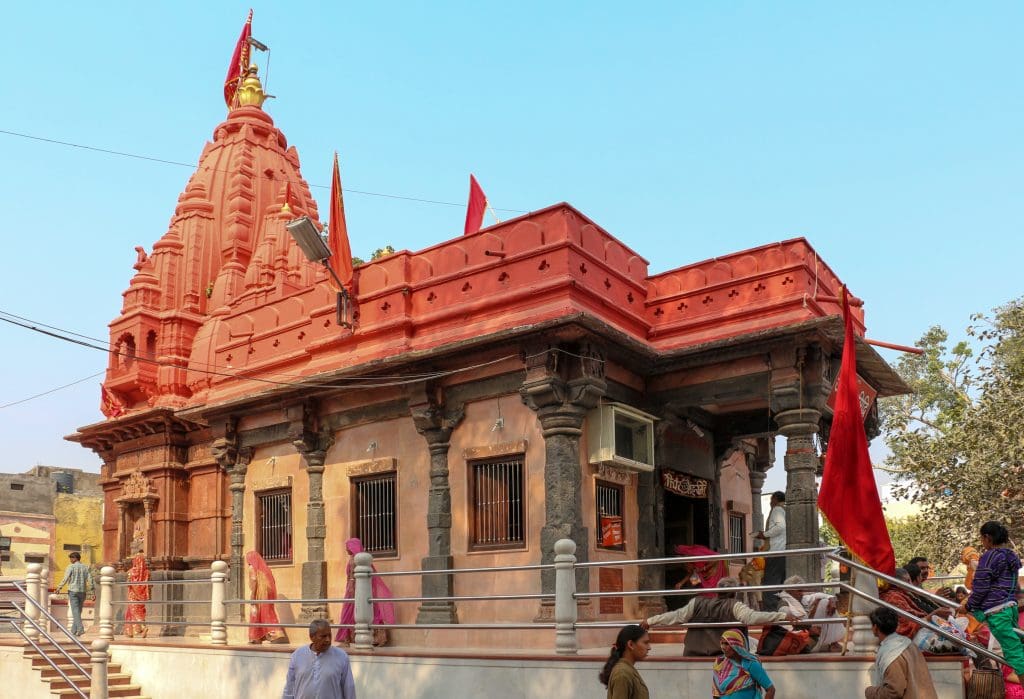
The temple is famed for the existence of the Shree Yantra, which represents the nine forms of Durga, as well as two towering stamps that are illuminated with thousands of lamps during the Navratri festival, creating an astonishing scene to see.
Lakshmana Temple
Lakshmana Temple, the ancient and biggest temple in Khajuraho’s western wing, is considered auspicious for seeking blessings from Lord Vishnu. In properties and physical ornamentation, the temple is comparable to Kandariya Mahadev, yet it has its distinct traits.
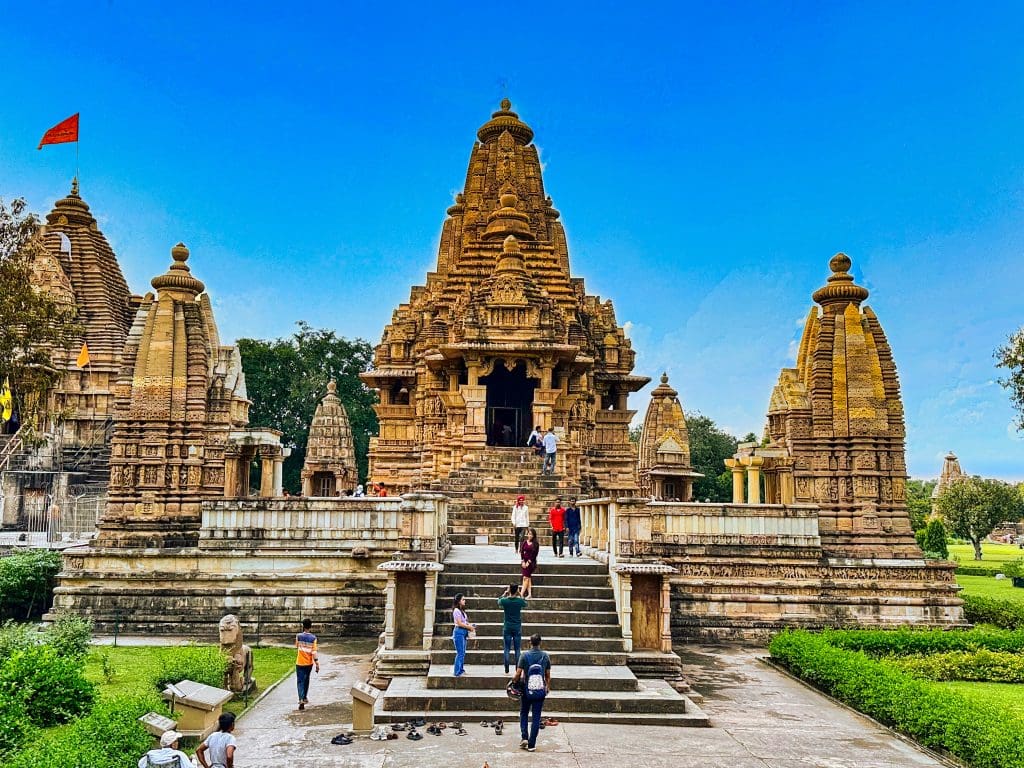
The magnificent entry porch ceiling and the female bracket figure within the Lakshman temple deserve an important mention. On the auxiliary shrine in the temple’s eastern corner, the master designer and his disciples are carved. Even the adhisthana, the temple’s lowest foundation or foundation on which the shrine sits, is beautifully crafted.
India’s religious
Madhya Pradesh, with its deep spiritual roots and architectural splendour, offers a captivating journey through India’s religious and cultural heritage. The state’s temples, ranging from the world-renowned Western Group of Temples at Khajuraho, a UNESCO World Heritage site celebrated for its intricate sculptures and carvings, to the serene Omkareshwar Temple nestled on an island shaped like the sacred Om symbol, showcase the diverse expressions of devotion and artistry.
The Mahakaleshwar Temple in Ujjain, one of the twelve Jyotirlingas, draws pilgrims from across the world, offering a glimpse into the living traditions of Hindu worship. As you explore these sacred spaces, from the ancient caverns of the Udayagiri Caves to the majestic spires of the Bhojpur Shiva Temple, you’re not just witnessing stones and sculptures; you’re stepping into a world where every detail tells a story of faith, endurance, and the eternal search for the divine.
Madhya Pradesh’s temples are not merely tourist destinations; they are the beating heart of India’s spiritual landscape, inviting seekers and admirers to experience the profound tranquillity and beauty that lies within their walls.
Read more: Discover Your India



